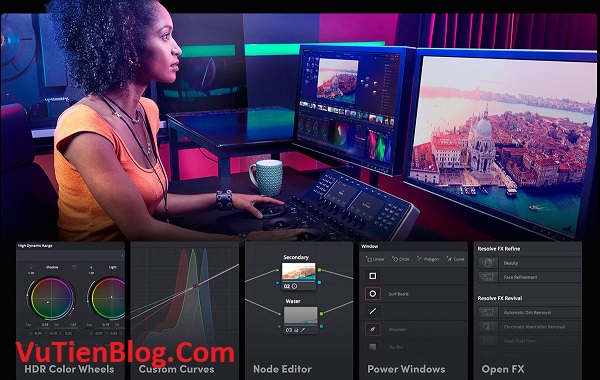

So you’re getting an extra value with each, AND the price got lower. The other change is that each of these pieces of hardware will now be bundled with a Resolve license, just like the cameras. The only one to get higher is the Resolve Speed Editor, but you’ve been able to get one for free with purchase of a Resolve license for the past year so I suppose all good things must come to an end. The cut page on DaVinci Resolve (Image credit: Blackmagic Design)ĭaVinci Resolve first started as colour correction software, but it evolved over the years and now houses all the post-production tools you’ll need to get a film ready.In an unexpected move, Blackmagic Design has announced some price changes for their DaVinci Resolve hardware.Įditor Keyboard, Micro Panel, and Mini Panel all got a significant price cut. It offers support for editing, colour correction, visual effects, motion graphics, and audio post-production. To ensure the whole gamut of high-end tools doesn’t overwhelm users, DaVinci Resolve is split into dedicated workspaces known as pages. Each page gives you tools to handle specific post-production tasks. You’ll find editing on the Cut and Edit pages, colour correction on the Color page, motion graphics and visual effects on the Fusion page, audio on the Fairlight page, and media organisation and output on the Media and Deliver pages. Everything is well organised and you can switch between workspaces with just a click. This one-stop solution will be appealing to a proficient editor working on a complex project that involves various aspects of post-production.

Some of these functions are best-in-class: color graders around the world attest to how DaVinci is one of the top color correction tools on the market, paid or otherwise. DaVinci Resolve: Audio powerhouseĮffortless collaboration for multiple departments (Image credit: Blackmagic Design) However not all these features are alike: for example Fusion won't exactly give you effects worthy of Adobe's After Effects.

The post-production process typically has a linear workflow where each department does its bit and passes the project on to the next department. With DaVinci Resolve’s multi-user collaboration, users can simultaneously work on the same project. Each artist gets their own workspace with the specific tools they require. The entire workflow is tied together and managed by a robust multi-user database, universal timeline, and advanced sound and image processing engines. This means editors, colourists, VFX artists, and even sound engineers can work on the same project simultaneously. A workflow like this streamlines post-production and helps you get the project ready expeditiously, even with teammates working from remote locations. Version 18 of DaVinci Resolve brings lots of improvements here, with cloud hosting making the joint edit process a breeze (though you do need to pay for the servers).


 0 kommentar(er)
0 kommentar(er)
